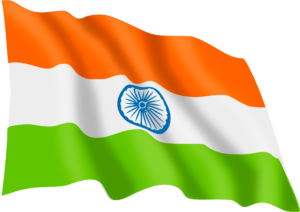How many people are vegetarian in India?

By Kavitha Shankar, VRG Intern
Per the census data released by the government of India in 2014,1 a total of 72% of males and 71% of females are meat-eaters in populations of 15 years of age and over. Census data from 20042 indicate that three out of four citizens above the age of 15 years are non-vegetarian. Although the percentage of meat eaters has dropped from 75% in 2004 to 71% in 2014, it still seems high for a country that most people view as a vegetarian nation. Also, an analysis of the National Family Health Survey (NFHS) by LiveMint found that vegetarianism has been on the decline between 2005 and 2015. Further, per other research, the percentage of vegetarians may be even lower (by about 10-15%) than indicated by the 2014 census data published by the government of India.
From the census data, it is not clear what types of meat (red, white, seafood) were included in calculating the numbers. It is also not clear if an ovo-lacto diet pattern was classified as vegetarian or “non-vegetarian.” However, the NFHS 2015-2016 surveyed about 800,000 men and women (700,000 females and 100,000 males) with questions geared at assessing whether they were fish, chicken, meat (assumption: meat may equate to beef and/or pork which is consumed in select populations only; may include goat which is widely consumed), egg, and dairy consumers.
Per the NFHS survey, about 30% of women and about 20% of men may fall under the lacto-vegetarian category (“Never” consume “eggs,” “chicken or meat,” “fish or chicken or meat,” “fish”). It is interesting also to note the contents of another table in the survey that breaks down consumption patterns by religion. 30% of Hindu women and about 40% of Hindu males consume some kind of meat. This seems to be in line with the outside world’s perception that Hindus are predominantly vegetarians.
Another article from the Indian Express,3 an Indian news agency, has reported that meat consumption seems lesser in states that consume more dairy, specifically milk. These statistics were based on the National Sample Survey’s Office (NSSO). Given this, we may be able to assume that India’s vegetarianism numbers from the census may include ovo-lacto vegetarians. Although, we cannot be certain. There are no comments or methodology of survey listed with the census reports.
References
1. Government of India. Sample registration system baseline survey 2014. censusindia Website. https://www.censusindia.gov.in/vital_statistics/BASELINE%20TABLES07062016.pdf. Published 1/1/2014. Updated 2014. Accessed July 5, 2020.
2. Government of India. Sample registration system baseline survey report-2004. censusindia Website. http://censusindia.gov.in/Census_Data_2001/baseline/baseline2004.pdf. Published 2004. Updated 2004. Accessed July 5, 2020.
3. Damodaran H. In india, To be veg is to drink a lot of milk. Indian Express. 2015;Explained:1. Available from: https://indianexpress.com/article/explained/in-india-to-be-veg-is-to-drink-a-lot-of-milk/. Accessed July 5 2020.
For information about other polls, see:
https://www.vrg.org/nutshell/faq.htm#poll
https://www.vrg.org/nutshell/faq.htm#international
